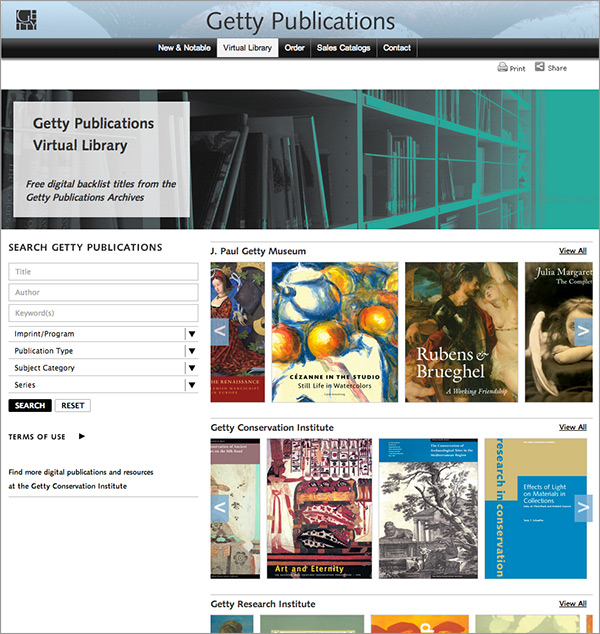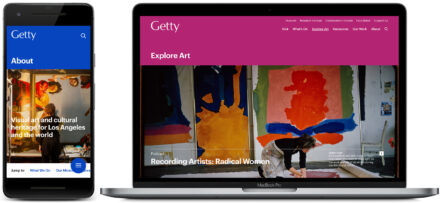When we launched the Open Content Program last summer and released 4,600 collection images to the public (a number that has since more than doubled), I cited this quote from the most recent museum edition of the NMC Horizon Report: “it is now the mark—and social responsibility—of world-class institutions to develop and share free cultural and educational resources.” This dictum continues to inform our efforts here at the Getty, and today I am very pleased to share with you our latest project in this arena, the Virtual Library: An open, online repository of more than 250 Getty publications from our 45-year publishing history, available as high-quality scans to read online, or to download in their entirety, for free.
I am unabashedly biased about the work we do at the Getty, but I believe you’ll find some extraordinary titles here—made even more extraordinary by the fact that they are now only a single click away. For example, in 2004, the Getty presented the first-ever exhibition of Cézanne’s beautiful watercolor still lifes. The catalogue published with the exhibition was written by scholar Carol Armstrong and is a moving examination of this most subtle and luminous of mediums and genres. It’s now free in the Virtual Library. So too is the definitive English translation of Otto Wagner’s modernist manifesto, Modern Architecture. Not to mention books on important globe-spanning conservation projects as the wall paintings of Nefertari’s tomb in Egypt, ancient sites along the silk road, and historic adobe buildings in our own earthquake-prone Southern California backyard.
The books in the Virtual Library come from three of the Getty’s programs: the Getty Conservation Institute, the Getty Research Institute, and the J. Paul Getty Museum. The over 250 offered here today—and the many more we will continue to add into the future—represent a significant portion of our publishing list. Still, they are just a modest part of what is becoming an important, informally networked library, spread across multiple institutions and spanning thousands of years of art historical knowledge. Our virtual library proudly joins those already created by the Metropolitan Museum of Art, the Guggenheim, LACMA, and others. We hope you will explore and use them all. The books they hold are treasures meant for all, and now easier than ever for all to access and enjoy.






Amazing! Thank you for such a wonderful resource.
Fabulous idea. A wonderful way to expose people to an art education that they would never have the opportunity to experience in person.
Yay! This is another fantastic opportunity. I was so excited to find European Drawings vol 1 on there! I have been checking for it every time I visit the Getty (I already have vols 2-4) on the off chance a copy would show up! I just downloaded it! I can see I will be spending lots of time between these two sites! Thank you!
Thank you very much for opening such an art resources to our art lover.
As an artist driven by research having access to such beautiful material is wonderful and helps develop my practice. But of much greater significance is making art freely accessible to those people in the world who would never be able to engage with it otherwise, due to health disadvantage, financial disadvantage, country of residence or cultural barriers. Congratulations!
THIS is as awesome as it gets!! Thank you SO MUCH for this wonderful “gift”…an opportunity for all to enjoy!
thanks
Its benevolent…. I don’t know if I will ever come to Getty museum…
But I can access the collection now.
Thank You
Regards